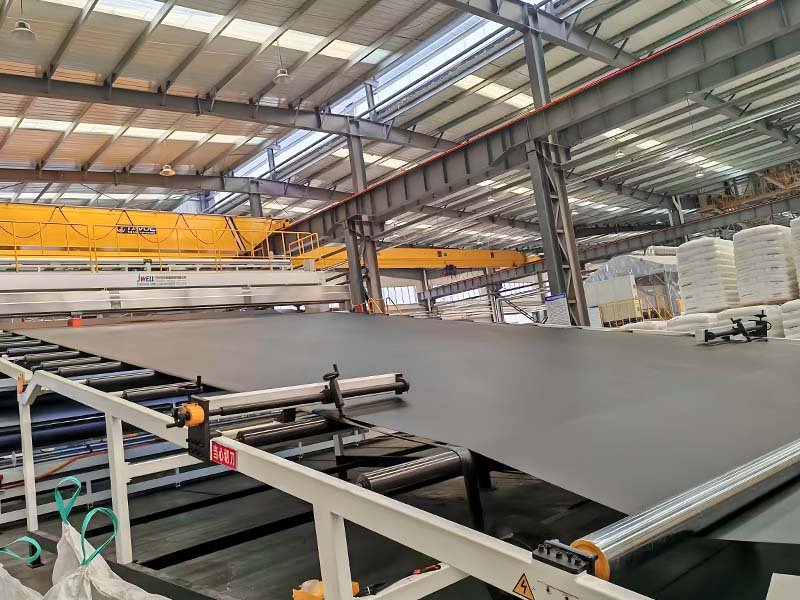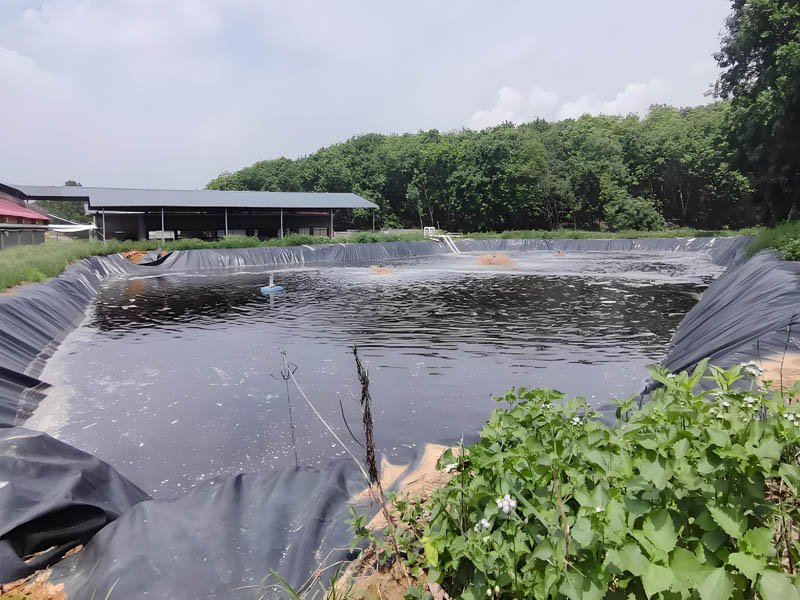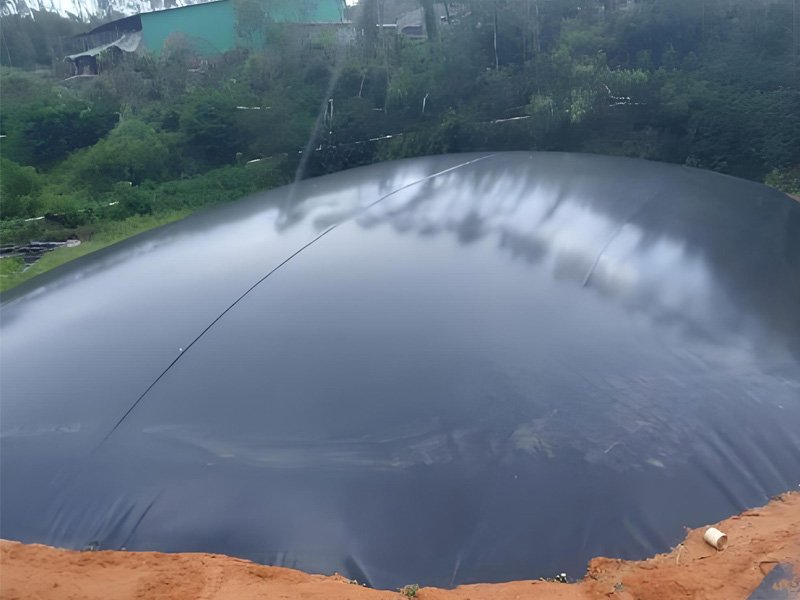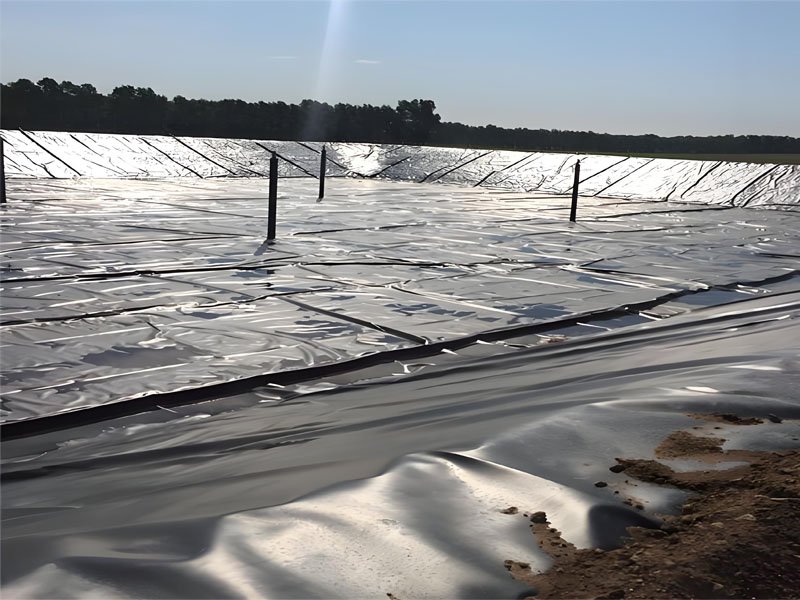In the world of geosynthetic materials, a 500 micron pond liner stands out as a versatile and durable solution for various water containment applications. BPM Geosynthetics, a renowned company in the industry, offers high-quality 500 micron pond liners that are designed to provide superior performance and reliability. These liners play a crucial role in managing water resources, preventing contamination, and ensuring the longevity of ponds and other water bodies. In this article, we will explore the features, benefits, and diverse applications of 500 micron geomembrane provided by BPM Geosynthetics.
1. What Is 500 Micron Pond Liner?
A 500 micron pond liner is a geosynthetic material. It lines ponds’ bottoms and sides. It prevents water seepage, contamination, and erosion. “500 micron” means thickness. One micron equals one-thousandth of a millimeter. This thickness balances durability and flexibility. It suits domestic and commercial uses.
Key Features of a 500 Micron Pond Liner:
- Thickness: At 500 microns, the liner is thick enough to withstand typical environmental stresses while remaining flexible enough to conform to the shape of the pond.
- Material: Typically made from high-density polyethylene (HDPE) or low-density polyethylene (LDPE). These materials resist chemicals, UV radiation, and temperature changes.
- Durability: HDPE and LDPE offer excellent puncture and tear resistance, ensuring the longevity of the pond liner.
- Waterproof: These liners are completely impermeable, preventing any water from leaking into the surrounding soil.
- Flexibility: Despite its thickness, the liner remains flexible, allowing it to be easily shaped and installed in various pond configurations.
- Ease of Installation: Lightweight and easy to handle. These liners can be installed without specialized equipment. They are accessible for DIY projects and professional installations.


2. What Are Applications Of 500 Micron Pond Liner?
A 500 micron pond liner is a versatile geosynthetic material used in various large-scale engineering applications to line the bottom and sides of ponds. Here are some key uses of this type of pond liner in major projects:
2.1 Industrial Reservoirs
In large industrial facilities, 500 micron liners are used to construct reservoirs for storing process water, wastewater, or cooling water. Their impermeable nature prevents leakage and contamination, ensuring compliance with environmental regulations and protecting nearby ecosystems.
2.2 Hydroelectric Power Plants
For hydroelectric power generation, these liners are employed to create reservoirs behind dams. They provide a reliable barrier against seepage, maintaining water levels and maximizing energy output while minimizing environmental impact.
2.3 Mining Operations
In mining sites, 500 micron liners are used to line tailing dams and containment ponds. They prevent the escape of toxic substances and sediments, safeguarding the environment and surrounding communities from potential pollution.
2.4 Wastewater Treatment Plants
At large-scale wastewater treatment facilities, these liners are used to line lagoons and ponds where wastewater is stored and treated. Their chemical resistance and durability ensure long-term performance in harsh conditions, promoting efficient waste management.
2.5 Desalination Facilities
In desalination plants, 500 micron liners are used to line brine disposal ponds. These liners prevent the intrusion of contaminants into the groundwater while managing the concentrated salt by-products effectively.
2.6 Urban Stormwater Management
For managing stormwater runoff in urban areas, large retention and detention basins lined with 500 micron pond liners help control flooding and enhance water quality. They facilitate sustainable drainage systems that reduce pollutants entering natural water bodies.
2.7 Aquaculture Farms
In extensive commercial fish farming operations, these liners create secure environments for raising fish. They maintain water quality, prevent soil erosion, and protect against external contaminants, ensuring healthy fish growth and productivity.
3. How To Choose The Right 500 Micron Pond Liner?
Choosing the right 500 micron pond liner involves considering several factors to ensure it meets the specific requirements of your project. Here are some key aspects to consider when selecting an appropriate liner:
3.1 Material Composition
HDPE and LDPE are main materials for 500-micron liners. HDPE is tougher, resists punctures. LDPE is flexible, easier to handle. Choose based on project needs: durability, flexibility, installation ease.
3.2 Thickness
Verify that the liner is indeed 500 microns thick. This thickness provides a good balance between strength and flexibility, making it suitable for various applications. Ensure consistency in thickness throughout the liner to avoid weak spots.
3.3 Chemical Resistance
Check the liner’s resistance to chemicals, especially if you plan to store water with additives or in an industrial setting. HDPE liners generally offer better chemical resistance compared to LDPE.
3.4 UV Stability
For outdoor applications, choose a liner with UV stabilization to protect against sunlight degradation. This ensures the liner maintains its integrity and lifespan when exposed to direct sunlight over time.
3.5 Temperature Range
Consider the temperature variations your project will experience. The liner should be able to withstand extreme temperatures without cracking or becoming brittle. HDPE is known for its excellent temperature resistance.
3.6 Installation Requirements
Evaluate whether the liner requires specialized equipment for installation based on your project size and scope. Some liners are designed for easy DIY installation, while others may need professional machinery and expertise.
3.7 Cost Efficiency
Balance quality and cost. Cheaper now might seem good, but high-quality liners last longer, need less upkeep, saving money over time.
3.8 Manufacturer Reputation
Research the manufacturer’s reputation for quality and reliability. Read reviews, ask for recommendations, and possibly request samples to test the material’s properties before making a purchase.


4. How To Install 500 Micron Pond Liner?
To install a 500-micron pond liner, follow these general steps:
- Preparation: Ensure the pond area is free of sharp objects or roots that could puncture the liner.
- Liner Placement: Unroll the pond liner over the excavated area, allowing for some overlap on the edges.
- Smooth Out Wrinkles: Smooth out any wrinkles or folds in the liner to ensure a flat surface.
- Securing the Liner: Use rocks, bricks, or other heavy objects around the edges to hold the liner in place temporarily.
- Trimming Excess: Trim any excess liner with a utility knife, leaving some extra liner for adjustment.
- Adding Water: Slowly fill the pond with water while adjusting the liner to fit snugly against the pond walls.
- Final Adjustments: Make any final adjustments to the liner to ensure it sits properly and conforms to the shape of the pond.
- Covering Edges: Use soil, rocks, or landscaping materials to cover the edges of the liner for a more polished look.
5. Summary
In conclusion, a 500 micron pond liner is a robust and versatile material designed to create durable and long-lasting ponds. Its primary application lies in providing a reliable barrier that prevents water seepage while maintaining the integrity of the pond structure. This type of liner is particularly beneficial for both landfill and commercial projects due to its ability to withstand environmental stresses such as UV radiation, temperature fluctuations, and physical impacts. By ensuring proper installation and maintenance, a 500 micron pond liner can significantly enhance the lifespan and performance of any feature, making it an essential component in mining and aquaculture practices.If you have any questions or concerns, please contact us.





